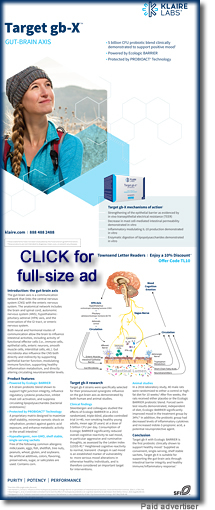Page 1, 2
Discussion
Gastroesophageal reflux disease is typically diagnosed on clinical symptoms alone. Further diagnostic tools such as endoscopies are invasive and are not typically necessary to diagnose GERD, especially if it is not complicated. According to the American Gastroenterological Association, endoscopy with biopsy should only be performed on patients with GERD if they have a troublesome dysphagia, suspected GERD related esophageal syndromes, or have not responded to PPI therapy.5 Esophagitis is one of the most common complications of GERD, and the Los Angeles classification is the most widely used grading system to assess it. This system grades the lesions based on number, size, and level of involvement of the luminal circumference. Further complications that may result from GERD include esophageal ulceration, laryngeal irritation resulting in chronic cough, teeth erosion, and Barrett's esophagitis. Barrett's esophagitis is considered a more serious complication, happening in about 10% of patients with chronic GERD with under 1% of those patients developing adenocarcinoma.5
In this particular case, diagnosis was made using a combination of symptoms and imaging. The most recent imaging report indicated an endoscopy that showed small esophageal ulcerations and a hiatal hernia. In conjunction with the patient's self-report of burning sensation in the chest and throat, a diagnosis of GERD with esophagitis and hiatal hernia was made. Considering the association between decreased B12 absorption and PPI use, together with macrocytic anemia findings on his CBC and the physical exam findings of enlarged tongue and lip tingling, it is likely this patient also has a B12 deficiency. Other conditions, such as chronic cough, that the patient displayed may also be related to his chronic reflux as laryngeal irritation from the acid can lead to this condition. Additionally, osteoporosis is a condition associated with chronic PPI use that the patient also has, as indicated on his most recent DEXA scan.
Although GERD is usually considered a benign condition, treatment can prevent the more complicated conditions previously discussed. Inhibiting acid production is the main allopathic treatment modality and is accomplished using four to eight weeks of therapy with a proton pump inhibitor. PPIs have demonstrated excellent efficacy in the treatment of GERD, with a 90% healing rate in erosive esophagitis and an 80% healing rate in Barrett's esophagitis.6 In non-erosive reflux, PPI therapy has been shown to have 50-65% healing rates, which is the highest among all pharmaceutical anti-reflux therapies.
 Studies demonstrating the efficacy of herbal demulcents in treating reflux and preventing further complications of GERD are not as prevalent as pharmaceutical therapies; however, aloe vera gel has shown efficacy and indication in several trials. In one study this species was shown to reduce gastric juice, acid and pepsin, and inhibit acute gastric lesions in rats.2 Other studies have shown reduced TNF-alpha as well as reduced gastric inflammation and ulcer size, with protective effects being comparable to the drug sucralfate. Aloe vera has also demonstrated efficacy in treating other gastric conditions such as H. pylori. In comparison to PPI therapy and H2R antagonists in the treatment of GERD symptoms, aloe vera gel is comparable in efficacy.2 Aloe vera is a promising medication as both a supplement in the conventional treatment of GERD and as mono therapy for symptom management. However, additional studies that directly compare this therapy to conventional management are needed. In addition, studies on the use of aloe veragel in conjunction with as needed pharmaceutical intervention are non-existent and could be extremely useful in reducing the number of individuals on chronic PPI therapy. Studies demonstrating the efficacy of herbal demulcents in treating reflux and preventing further complications of GERD are not as prevalent as pharmaceutical therapies; however, aloe vera gel has shown efficacy and indication in several trials. In one study this species was shown to reduce gastric juice, acid and pepsin, and inhibit acute gastric lesions in rats.2 Other studies have shown reduced TNF-alpha as well as reduced gastric inflammation and ulcer size, with protective effects being comparable to the drug sucralfate. Aloe vera has also demonstrated efficacy in treating other gastric conditions such as H. pylori. In comparison to PPI therapy and H2R antagonists in the treatment of GERD symptoms, aloe vera gel is comparable in efficacy.2 Aloe vera is a promising medication as both a supplement in the conventional treatment of GERD and as mono therapy for symptom management. However, additional studies that directly compare this therapy to conventional management are needed. In addition, studies on the use of aloe veragel in conjunction with as needed pharmaceutical intervention are non-existent and could be extremely useful in reducing the number of individuals on chronic PPI therapy.
As previously discussed, there is a need for therapies that are directed at the actual cause of GERD, which is transient LES. None of the common pharmaceuticals used in the treatment of GERD have mechanisms of action that address this issue. However, certain anti-spasmolytic herbs have demonstrated ability to regulate the pressure in the LES and thus improve symptoms of GERD. In particular, Fumaria officinalis has incidentally shown to improve symptoms of GERD while being used to treat gallbladder spasms.4 The efficacy of this treatment is incidental, and more studies need to be done that directly investigate the effect of Fumaria on the LES. However, with a lack of other treatment modalities, and the overall safety of this herb, it can be considered as a liable treatment in concurrence with other medications.
In regard to examining the treatment of this particular case report of GERD, there are several inherent limitations. The most prevalent one is the limitation on time and follow up with the patient. As the primary student clinician, I will only follow this patient for a 12-week period of time. This is insufficient to properly evaluate the efficacy of treatments and to follow up with post-treatment imaging. However, he had been seen at BUC for over one year during which time he had been treated with demulcent therapies (including aloe vera gel) as part of his GERD management. His endoscopy in April of 2017 did show some improvements in the amount of ulceration present in the esophagus from the previous imaging done in 2010. Additionally, in just two weeks of therapy with Fumaria the patient reported a resolution of symptoms, despite continuing to taper from his PPI medication. This has motivated me to continue this course of treatment with the hopes of absolving GERD complications such as esophagitis with the Aloe vera and to improve the integrity of the LES by adding the Fumaria. If his symptoms continue to dissipate, and considering his esophagitis is not classified as severe according to the small size of the ulcerations, he should be able to completely stop his PPI medication which is putting him at risk for developing other severe health complications.
Conclusion
The goal of this case report was to discuss the research on the etiology of GERD and how current treatments, both natural and synthetic, do or do not address this etiology and how these treatments have affected one particular case of GERD. Adverse side effects of PPI therapy has prompted need for natural therapies to address reflux, particularly when it is uncomplicated. Research on the efficacy of natural therapies in treating this disease is lacking, although preliminary investigations show promise. In the case of GERD discussed here, a hiatal hernia is present, indicating that lack of LES integrity is most likely the etiology of the symptoms. This has prompted a treatment approach that includes both strengthening the LES as well as protecting the esophagus from further inflammatory damage.
Page 1, 2
References
1. Hyun JJ, Bak Y-T. (2011). Clinical Significance of Hiatal Hernia. Gut and Liver. 2011;5(3):267–277.
2. Khedmat H, et al. Efficacy and safety of Aloe vera syrup for the treatment of gastroesophageal reflux disease. Journal of Traditional Chinese Medicine. 2015; 35(6): 632-6.
3. Farrell B, et al. Deprescribing Proton Pump Inhibitiors: Evidence-based Clinical Practice Guidelines. Can Fam Physician. 2017 May;63(5):354-364.
4. Yarnell E, Abascal K. Spasmolytic Herbs. Alternative and Complementary Therapies. 2011;17(3): 169-174.
5. Kahrilas P. Clinical manifestations and diagnosis of gastroesophageal reflux disease in adults. Up to Date. Retrieved August 7, 2017.
6. Dekel R, Morse C, Fass R. The role of proton pump inhibitors in gastro-oesophageal reflux disease. Drugs [serial online]. 2004;64(3):277-295.
|
![]()
![]()
![]()
![]()






